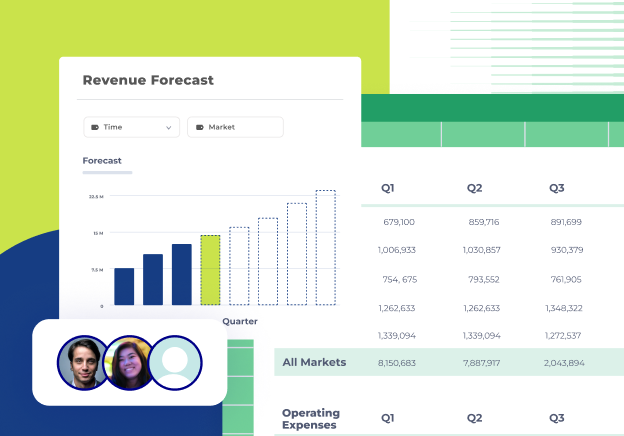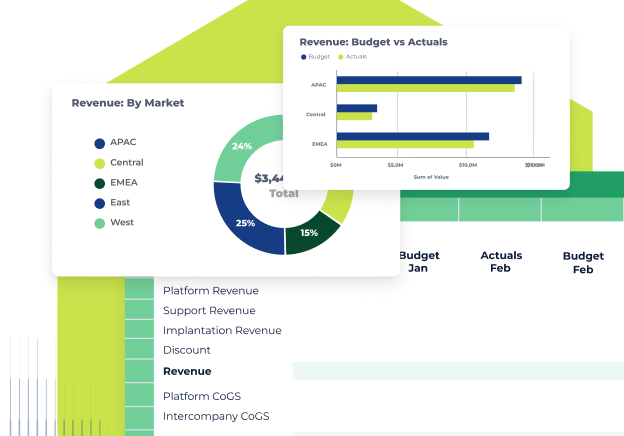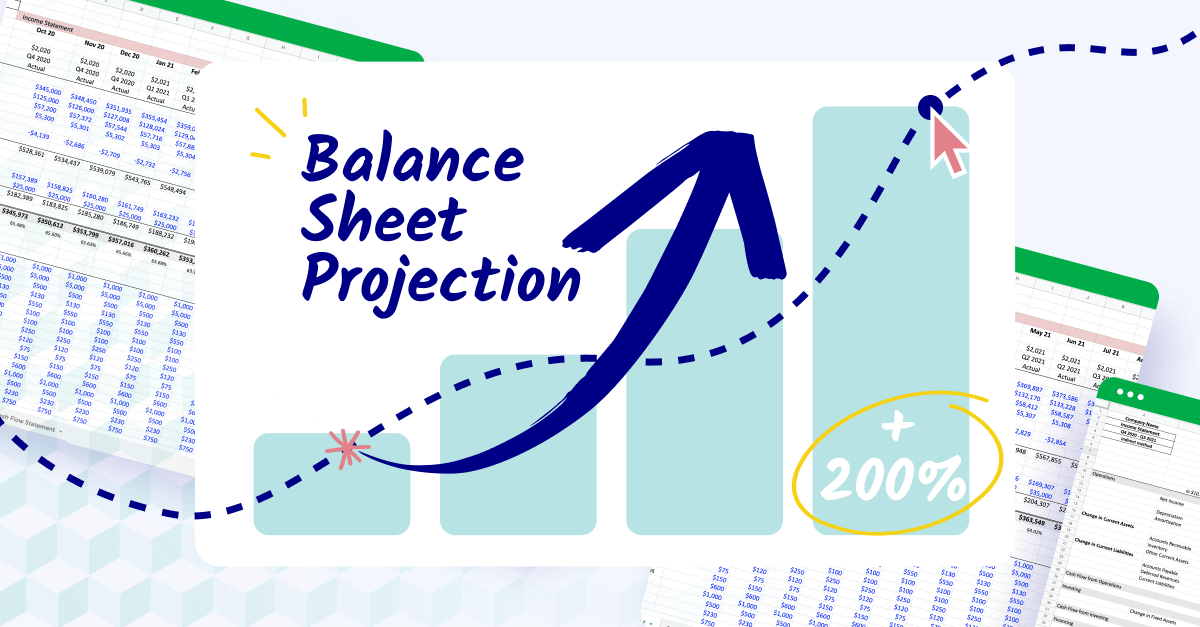What is financial due diligence?
Financial due diligence is the process of investigating a company’s financial records to confirm accuracy, assess risks, and determine long-term viability. It’s a critical step in mergers, acquisitions, and major investment decisions. The goal is for the numbers to truly reflect the company’s financial position.
The due diligence process covers everything from revenue trends and cash flow analysis to liabilities, tax exposure, and financial forecasting. It identifies red flags like inconsistent earnings, unreported debts, or aggressive accounting tactics that could distort a company's true value.
Financial due diligence vs. financial audits
Unlike a financial audit, which checks compliance with regulatory standards, due diligence looks deeper. Financial audits focus on verifying that a company's financial records are free from material misstatements and adhere to established regulations, providing stakeholders with confidence in the reported figures.
In contrast, due diligence examines whether reported profits are sustainable, if working capital is sufficient, and whether future financial projections hold up under scrutiny. Investors, lenders, and buyers use this analysis to protect their interests and negotiate terms based on real financial insights.

Who manages the financial due diligence process?
Financial due diligence requires a structured approach with clear responsibilities. The CFO leads the process, senior analysts assess financial data, and external advisors provide specialized insights. Here’s how it gets divided:
Chief Financial Officer: Oversees the entire process
The CFO sets the strategy, defines priorities, and ensures alignment with business objectives. Responsibilities include:
- Defining the scope and focus areas for financial review
- Evaluating risks, confirming assumptions, and advising leadership
- Managing relationships with external consultants, auditors, and legal teams
- Communicating findings to the rest of the C-suite
Senior financial planning & analysis teams: Assess financial data
Financial planning and analysis, or FP&A, is the set of strategic activities (planning, budgeting, forecasting, and analysis) that enable a company's ongoing financial health and ability to grow. From routine activities—like financial close and consolidation, cash flow reporting, and financial reporting—to strategic initiatives—including integrated financial planning, budgeting, scenario planning, financial forecasting, and financial modeling, financial reporting—FP&A covers a lot of ground.
FP&A analysts verify accuracy, identify trends, and highlight risks. Key responsibilities include:
- Examining historical financial statements for patterns or inconsistencies
- Collecting and consolidating departmental data and market research to benchmark performance against industry standards
- Conducting ratio analysis to assess profitability, liquidity, and solvency
- Validating forecasts against market conditions and operational realities
- Creating and preparing detailed reports like profit & loss, board reports, and variance reports
Their analysis provides the CFO with data-driven insights for informed decision-making.
Accounting and tax teams: Ensure compliance
Accounting teams verify financial records align with reporting standards. Tax specialists assess liabilities and regulatory risks. Their responsibilities include:
- Confirming that revenue recognition policies accurately reflect economic performance
- Identifying outstanding debt, off-balance-sheet items, and other financial obligations
- Reviewing historical tax filings and compliance to surface any unresolved liabilities
- Evaluating adherence to financial regulations, such as Generally Accepted Accounting Principles (GAAP) or International Financial Reporting Standards (IFRS)
- Analyzing internal controls and flagging potential areas of financial misstatement
- Assessing how recent or upcoming changes in tax law could affect the target company’s future obligations
Oversights in these areas can lead to unexpected costs or legal exposure.
External advisors: Provide specialized expertise
Auditors, legal consultants, and valuation experts assess financial risks beyond internal capabilities. They strengthen due diligence by addressing complex financial and legal considerations by:
- Conducting forensic accounting to identify irregularities
- Reviewing contracts for specific financial and legal risks
- Assessing tax exposure, including liabilities, credits, and deductions
- Identifying potential legal disputes, pending litigations, or regulatory violations
- Performing valuation assessments to ensure accurate pricing and deal terms
- Investigating debt structure and financing arrangements to uncover hidden liabilities
- Advising on post-deal financial integration and risk mitigation strategies
Hard vs. soft due diligence
Financial due diligence has two sides: the numbers and the factors influencing them. Hard due diligence verifies financial data, while soft due diligence assesses leadership, operations, and market position.
Hard due diligence: Verifying financial stability
Hard due diligence analyzes financial statements, tax records, and liabilities to confirm accuracy and assess risk. It evaluates:
- Revenue consistency: Reviews revenue streams, growth patterns, and accounting methods to identify irregularities.
- Profitability trends: Analyzes margins and cost structures to determine if earnings are sustainable.
- Cash flow health: Examines liquidity and working capital to assess short-term financial stability.
- Debt obligations: Identifies outstanding loans and repayment terms to measure financial leverage.
- Tax exposure: Reviews past filings and compliance to uncover potential risks.
This process ensures financial data reflects actual performance. If financial due diligence reveals discrepancies, the next step is to investigate the root cause and assess the potential impact on valuation and deal terms by:
- Requesting clarifications from management: Engage with the company’s finance team to understand discrepancies in revenue reporting, expense categorization, or tax compliance.
- Cross-checking data sources: Compare financial records with bank statements, tax filings, and auditor reports to validate accuracy.
- Engaging external experts: Forensic accountants or auditors can conduct deeper investigations into financial misstatements or irregularities if necessary.
- Adjusting valuation and terms: If inconsistencies affect profitability or liabilities, renegotiate the purchase price, request financial guarantees, or introduce earn-out clauses.
- Considering deal risks: If discrepancies suggest deeper structural issues like undisclosed liabilities or aggressive accounting practices, reassess whether the deal is viable or if you need additional safeguards.
Let’s say an acquiring company has discovered the target’s reported revenue included a large one-time contract that inflated annual earnings. Without the contract, revenue growth was stagnant. As a result, the buyer may negotiate a lower purchase price and include performance-based earn-out provisions to secure sustainable earnings.
Soft due diligence: Assessing long-term viability
Soft due diligence evaluates management, customer relationships, and operational efficiency. Key areas include:
- Leadership effectiveness: Reviews executive decision-making, experience, and ability to drive growth.
- Workforce stability: Assesses retention rates and employee engagement to gauge operational resilience.
- Customer concentration: Measures reliance on key customers to identify revenue risks.
- Market position: Evaluates competitive advantage, brand perception, and industry trends.
- Operational efficiency: Reviews supply chain reliability and scalability to assess cost control and growth potential.
A company with strong leadership, stable operations, and diversified revenue streams is better positioned for long-term success.
Hard and soft due diligence serve different but equally important functions. One confirms financial truth—what the company has done—while the other uncovers future potential—what the company can do. Neglecting one side can lead to costly oversights. Together, they help acquirers make confident, informed decisions—not just about what they're buying, but what it’s truly worth.

Types of financial due diligence
Financial due diligence isn’t a single uniform process. Here, we’ll look at three different contexts: due diligence for investments, M&A (buy-side), and M&A (sell-side).
Due diligence for investments
Investors need a clear picture of a company's financial health before buying its stock. Strong revenue growth, stable cash flow, and a competitive market position indicate a solid investment, while inconsistent earnings or high debt levels signal risk.
Key steps:
- Analyze financial statements: Review income statements, balance sheets, and cash flow statements over multiple years. Identify trends in revenue, expenses, and profitability.
- Evaluate profitability metrics: Compare return on equity (ROE), gross margin, and net profit margin against industry benchmarks.
- Identify financial risks: Look for declining earnings, rising debt, or irregular expenses. High accounts receivable may indicate slow-paying customers.
- Assess management performance: Review earnings call transcripts and investor reports to evaluate leadership decisions and future plans.
- Compare market positioning: Examine competitors' financials to understand where the company stands in its industry.
Who handles what?
- FP&A analysts conduct ratio analysis, financial modeling, and competitor benchmarking to evaluate profitability and financial risks. They also analyze trends in financial statements and assess market positioning.
- The CFO oversees the investment assessment process, ensures financial risks are properly evaluated, and determines whether the investment aligns with the company’s broader strategic and financial objectives.
Due diligence for M&A buy-side
Acquiring a company requires a detailed financial review to confirm its value, assess risks, and ensure the investment supports long-term growth.
Key steps:
- Verify revenue sources: Identify recurring revenue streams and evaluate customer concentration. A company reliant on a few clients faces a higher risk.
- Assess cost structure: Break down operating expenses to find inefficiencies or unsustainable costs.
- Analyze working capital: Ensure the company has enough cash flow to cover short-term obligations.
- Review tax liabilities: Identify compliance risks or unpaid taxes that could affect post-acquisition finances.
- Examine debt obligations: Assess loan agreements, interest rates, and repayment terms to determine financial flexibility.
Who handles what?
- The CFO sets the due diligence strategy, oversees risk assessment, and engages with leadership, investors, and external advisors to make key go/no-go decisions.
- FP&A analysts review historical trends, forecast performance, and assess financial risks.
- Accounting teams verify financial records, tax compliance, and outstanding liabilities.
- External auditors or legal teams conduct forensic accounting and contract reviews.
Due diligence for M&A sell-side
Sellers must prepare for detailed financial scrutiny. Buyers will review cash flow, liabilities, tax records, and contracts before finalizing a deal. A well-prepared seller presents a clear financial history, avoids delays, and strengthens negotiation positions.
Key steps:
- Prepare audited financials: Ensure income statements, balance sheets, and cash flow reports are accurate and well-documented.
- Resolve financial risks: Address inconsistencies in financial records before buyers flag them as concerns.
- Optimize working capital: Improve cash flow management to present a stronger financial position.
- Document revenue sources: Outline revenue models and growth drivers to support valuation.
- Review tax exposure: Identify and correct tax compliance issues before due diligence begins.
Who handles what?
- The CFO leads financial strategy, valuation, and deal positioning and acts as the primary liaison with investors, buyers, and external advisors.
- FP&A analysts prepare financial forecasts, scenario planning, and working capital analysis as a compelling narrative for buyers.
- Accounting teams ensure financial records are audit-ready, accurate, and compliant with reporting standards.
- Legal advisors review contracts, liabilities, and regulatory compliance to smoothen the transaction.
Financial due diligence best practices
No matter which type of financial due diligence you’re conducting, use these best practices to streamline the process.
1. Gather all necessary documents before starting
Organizing key documents in advance keeps the process efficient. Gather:
- Financial statements: Income statements, balance sheets, and cash flow statements for the past three to five years.
- Tax filings: Federal, state, and international tax returns, along with any outstanding obligations.
- Debt and liabilities: Loan agreements, repayment schedules, and any undisclosed financial commitments.
- Contracts and agreements: Customer contracts, supplier agreements, and lease obligations.
- Operational data: Revenue breakdowns, cost structures, and working capital details.
- Cap table and equity structure: Shareholder information, stock option plans, and any recent or pending equity transactions
- Accounting policies and procedures: Documentation on revenue recognition, depreciation methods, inventory valuation, and internal controls
- Auditor reports and internal reviews: External audit opinions, management letters, and internal audit findings
- Forecasts and budgets: Current-year forecasts, historical budgets, and variance analyses
Ideally, a centralized document system can provide analysts, executives, and external advisors quick access to financial data.
2. Plan for potential issues
Financial due diligence often uncovers missing records, unreported liabilities, or revenue inconsistencies. Being prepared for these risks allows buyers to respond quickly and protect deal value.
Here are some items to look out for.
- One of the most common challenges is incomplete data. Cross-check missing or inconsistent records against bank statements, tax filings, and previous audits to fill gaps and ensure data integrity.
- Revenue inconsistencies can also pose a problem, particularly when a company’s revenue recognition policies don’t align with actual cash inflows. Buyers should compare reported revenue against bank deposits and customer payments for the most reliable figures.
- Beyond financial records, hidden liabilities present a major risk. These may include outstanding legal claims, pending litigations, or off-balance-sheet obligations that could impact valuation and deal terms. Thorough legal and accounting reviews can help uncover these liabilities before they become roadblocks.
- Operational disruptions—such as supply chain dependencies, reliance on key personnel, or over-concentration of revenue in a few customers—can pose risks to long-term financial stability.
To mitigate these risks, buyers should build contingency strategies into both their financial planning and deal structure. For example:
- Diversify revenue streams to reduce reliance on any single customer.
- Identify backup vendors to minimize supply chain disruption.
- Structure deals with safeguards such as earn-outs, escrow accounts, or indemnity clauses.
Scenario planning is another critical tool. Modeling various risk scenarios, such as delays in revenue collection, regulatory penalties, or supply chain failures, and evaluating their potential financial impact. This puts you in a better position to negotiate stronger terms, build contingency clauses into agreements, and prevent last-minute surprises that could jeopardize the transaction.
Download this complete financial planning calendar to set yourself up for success.
3. Conduct tax due diligence
Tax liabilities affect a company’s financial health. Unpaid taxes, aggressive deductions, or pending audits create risks for buyers and investors. Accounting teams and external tax advisors will:
- Analyze past returns for discrepancies, audits, or compliance issues.
- Identify unrecognized tax obligations that could impact future earnings.
- Review international transactions for transfer pricing risks and regulatory compliance.
- Assess available deductions, credits, or regulatory benefits that influence valuation.
This step is essential for understanding both current and future tax exposure. Overlooking tax-related issues can lead to unexpected liabilities post-close—impacting cash flow, triggering penalties, or even altering the valuation of the deal.
4. Use financial software to automate the due diligence process
Manual due diligence increases errors and slows decision-making. Automating parts of the process improves both accuracy and speed, enabling teams to focus on analysis instead of data wrangling.
Here are some of the leading finance software platforms on the market today.
- Cube: This FP&A software automates financial data consolidation, reporting, and forecasting directly in the spreadsheets you’re already using. Its AI-powered features detect anomalies, flag inconsistencies, and reduce the risk of human error, enhancing data integrity for superior due diligence. Cube also streamlines scenario planning, allowing finance teams to model different financial outcomes and make data-driven decisions with confidence.
- NetSuite: Provides a comprehensive ERP system with financial planning, reporting, and tax compliance.
- Xero: Offers automated financial tracking, invoicing, and reporting for small to mid-sized businesses.
- Workiva: Centralizes financial reporting and compliance data in a single platform.
- FloQast: Streamlines financial close processes and automates reconciliations.
- Anaplan: Helps finance teams anticipate risks and make data-driven decisions.
- BlackLine: Runs account reconciliations and financial controls while reducing audit risks.
Leverage financial due diligence for long-term success
Financial due diligence isn’t just a box to check during fundraising or M&A (mergers and acquisitions). When integrated into ongoing financial management, it becomes a powerful tool for smarter decision-making, proactive risk mitigation, and long-term business stability.
By taking a structured, automated approach, finance teams can continuously validate data, uncover hidden risks, and surface insights that drive better strategies. This ongoing diligence builds confidence across the business—and ensures you're planning from a position of strength and strategy.
Explore how Cube can support your financial due diligence processes.



.png)









.png)

![Financial due diligence: What is it & how to do it [2025]](https://www.cubesoftware.com/hubfs/EBook%20Cover%20(26).png)


.png)

